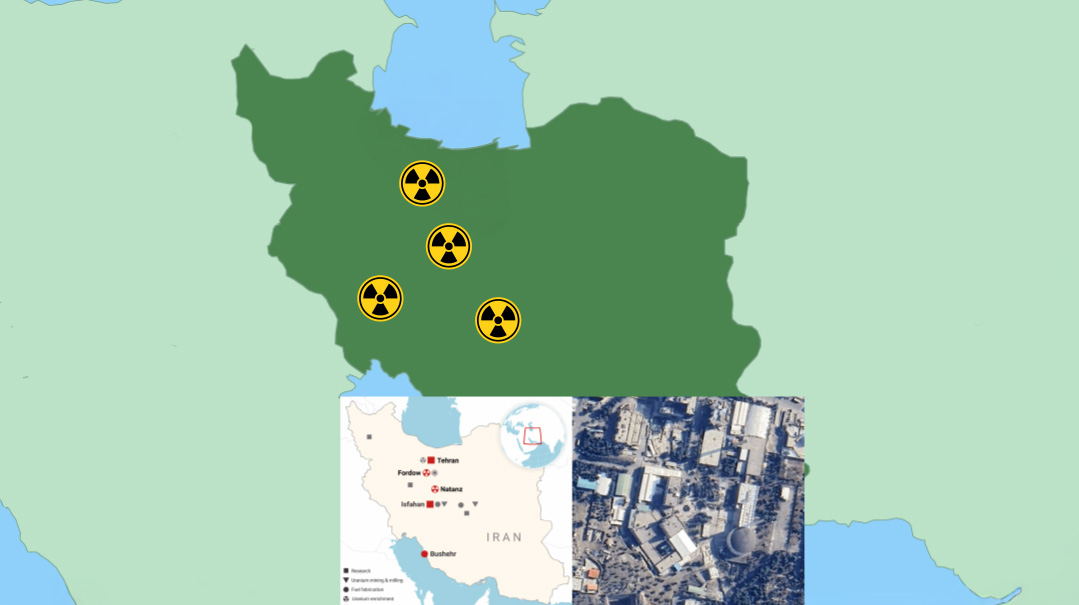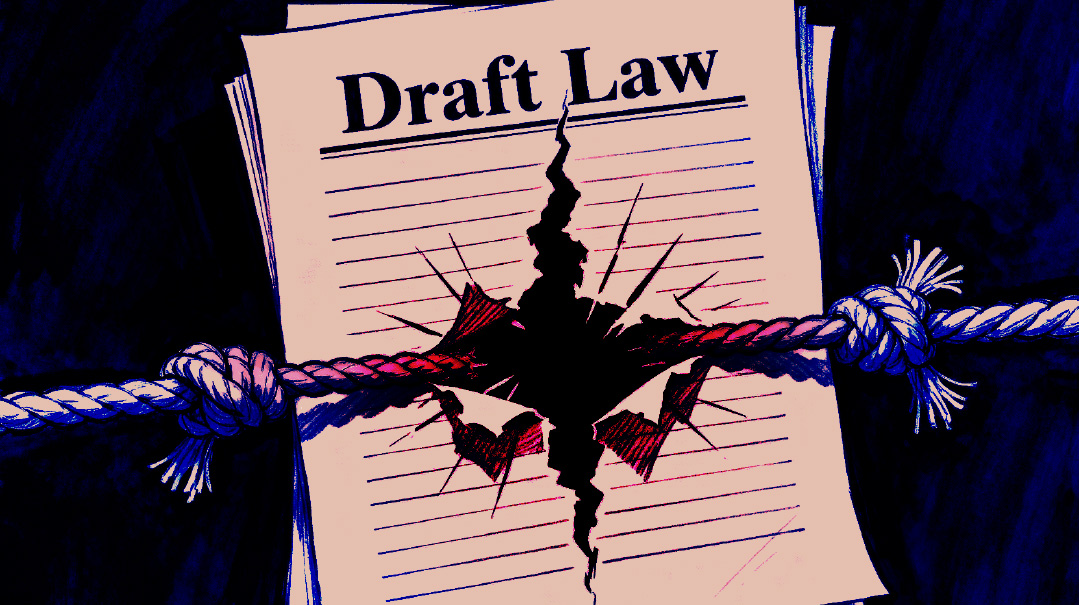Damage Control
| June 24, 2025A better understanding of what was accomplished in Iran runs through a map of the key targets

The combined impact of Israel’s strikes, followed by an American assault, dealt a significant blow to Iran’s nuclear program. America’s Chairman of the Joint Chiefs of Staff announced that its strikes had caused “extremely severe damage and destruction.”
Yet with initial evaluations relying largely on satellite images, the extent to which Iran’s capability to produce an atomic weapon was impaired or delayed remains unclear. A better understanding of what was accomplished runs through a map of the key targets.
Natanz
1.
IT was believed that over 10,000 centrifuges were housed in underground halls of the facility in Natanz. These devices are essential to enriching and purifying uranium to the 90% level needed to produce a nuclear weapon. The IAEA confirmed that the uranium there reached 60%, which could easily be refined to weapons grade.
Israeli air strikes destroyed the plant’s main buildings and cut its power supply, slowing the centrifuges from spinning at the high speeds needed to keep them operational.
“If you abbreviate the spin-down process, there’s basically no way to keep them from self-destructing,” said David Shlapak, senior defense researcher at RAND. “So, if you cut off the power, and just shut them down without any kind of controls, that probably wrecked a lot of centrifuges.”
Subsequent US strikes with B-52 bombers likely eliminated the rest of what remained of Natanz’s above-ground structures.
Isfahan
2.
Isfahan was the center for Iran’s atomic research and its various institutions, employing some 3,000 scientists.
Most essential to actual development of a weapon, Isfahan is where Iran converted raw mined “yellow-cake” uranium into a gas, known as hexafluoride, or into metal hemispheres, the firsts steps in creating nuclear energy or a weapon. From there, these materials were sent to Natanz, Fordow, or a set of smaller facilities for enrichment.
Additionally, already enriched uranium was stored in an underground location in Isfahan, likely enough to produce 10 nuclear weapons.
Israeli strikes caused significant damage to at least four buildings. It is believed that equipment used for the conversion process was damaged and possibly destroyed. The site was then hit with Tomahawk missiles fired from US submarines, probably rendering it unusable.
Fordow
3.
Fordow’s enrichment halls were buried more than 260 feet below ground, built into a mountain. Only its tunnel entrances and a few minimal structures could be seen from surface level.
It was designed to mirror the type of uranium enrichment that went on at Natanz but was focused strictly on production.
IAEA inspectors detected uranium in Fordow that has been refined to within inches of weapons grade, which could be harnessed to produce a weapon in a matter of months or even weeks.
It was left unscathed by Israeli attacks, as the facility’s depth makes it impervious to nearly all conventional bombs.
America struck Fordow with several 30,000-pound Massive Ordnance Penetrators (MOPs) or “bunker busters.” Only the United States possesses these bombs and the planes to deliver them.
Some felt that following Israeli attacks, neutralizing Fordow had become imperative.
“Leaving Fordow would have left a pathway to make weapons-grade uranium, and that is a concern because if there’s a ceasefire, it’s unclear Iran is going to allow IAEA inspectors back in,” said Andrea Stricker, deputy director of the nonproliferation and biodefense program at the Foundation for the Defense of Democracies. “They had a very high incentive to race toward a weapon with whatever they had.”
Satellite images from after the US strike showed six deep craters around Fordow, revealing where the MOPs penetrated the ground and presumably destroyed what lay below.
Arak
4.
The Arak facility, currently known as Khondab, houses a “heavy water” nuclear reactor and production plant. Heavy water is used to produce plutonium, an alternative route toward a nuclear weapon, distinct from uranium enrichment.
The facility was closed in accordance with the 2015 JCPOA, but Iran had begun reconstruction efforts.
It is believed that Israeli strikes disabled the facility’s electricity supply, temporarily incapacitating its function.
Where Iran’s Nuclear Project Was
For several years already, Iran possessed enough refined uranium to work toward a weapon in a matter of months.
The process of then fitting it to a deliverable weapon would take another year or two.
Holding off was a calculated move.
“It’s a conscious decision to leverage its threshold status for extortion of economic benefits, but also a fear of being caught,” said Ms. Stricker. “They really had a fear that the Israelis or the United States would catch them, and that kept them stuck were they were.”
Where Iran’s Nuclear Program Is Now
The attacks were two pronged:
Targeted Scientists
More than a dozen scientists involved in Iran’s nuclear program were killed in Israeli strikes. Several were part of atomic development efforts dating back to the early 2000s, making them among the most experienced in the country.
While their knowledge was recorded and passed onto others, eliminating these scientists could still hinder Iran’s ambitions, according to Mr. Slapak.
“It’s like playing the world’s most expensive and dangerous arts and crafts project and you’re losing the people who best knew how to take that forward,” he said. “There’s an important interface between science and engineering, which is very important if you’re trying to go from producing nuclear material to building a weapon.”
Targeting scientists can have a useful deterrent effect as well, said Andrea Stricker. “I think it dissuades scientists form staying in this line of work.”
Air Strikes
The massive strikes have reset Iran’s nuclear clock.
“Iran’s atomic weapons program has been set back by many months, if not years. And to recover all it lost, would take years. The United States and Israel have severely damaged or eliminated every step of the atomic weapons supply chain,” said Ms. Stricker.
Evaluating exactly how far Iran was set back is further complicated by its government’s statements that significant amounts of atomic material was moved to other locations in advance of the strikes. Israeli intelligence claims some knowledge of the whereabouts of Iran’s remaining enriched uranium, which may be the target of future attacks.
Some of these unknowns regarding Iran’s ability to produce an actionable bomb in the short-term might be of less concern, as a result of Israeli strikes to destroy its weaponization technology.
Still, while recovery will challenge the weakened regime, it remains feasible.
“It will take time to rebuild, and they’ll want to dig deeper this time,” said Mr. Shalpak, “but they can absolutely do it.”
(Originally featured in Mishpacha, Issue 1067)
Oops! We could not locate your form.







